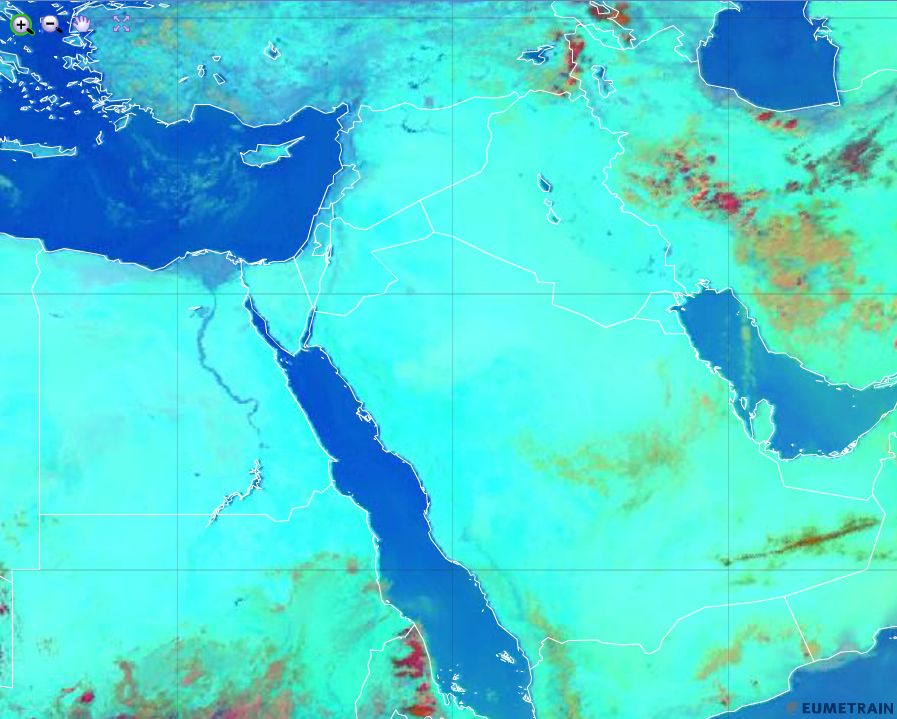Sandy deserts
Sandy deserts depict in cyan in the Day Microphysics RGB images.
The red colour beam (VIS0.8) is smaller compared to the green and blue colour contribution. The reflectivity in the VIS0.8 channel depends mainly on the sun angle.
The reflection of short wave solar radiation measured by channel IR3.9 is very high for bare soils (sandy desert). Vegetated surfaces have a small albedo at 3.9 micrometer.
The intensity of the blue colour beam increases with temperature. Sandy deserts show very high temperatures during the summer months, therefore, the blue colour contribution is very high.
With a strong contribution of the green and the blue colour beam over sandy deserts, the resulting colour is cyan. This can be seen on the below Day Microphysics RGB image which displays Egypt and the Arabian peninsula.

HRV Cloud RGB from 24 July 2015, 12:00 UTC
Explanation of the cyan colour of sandy deserts in the Day Microphysics RGB (see the recipe):
With a strong contribution of the green and the blue colour beam over sandy deserts, the resulting colour is cyan

